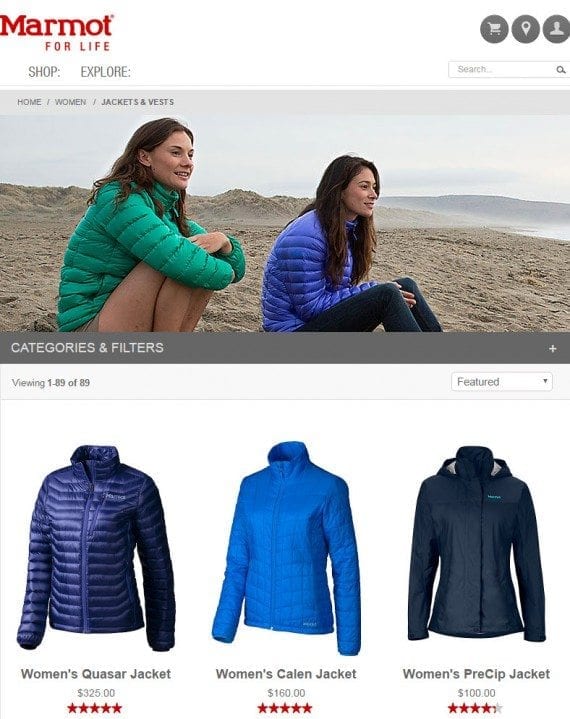Every page of your site is an entry page for natural search. Are all of your pages ready to welcome searchers?
All shoppers want something. They may not want to buy today. They may only be researching. But the goal eventually is to fulfill a need or desire by making a purchase somewhere, sometime. That’s the reason they shop.
Searchers are special breeds of shoppers. They may not enter your site — and navigate tidily through it — at the point you plan, to consume your marketing messages en route to a purchase. Searchers can enter your site on any page via the search results.
Yes, if your site is like most, the home page is a frequent entry for natural search. However, one sign of a well-optimized site is that many pages are entry pages. So in essence, a well-optimized site encourages the trend for searchers not to follow your prescribed path.
Think of it this way: Searchers query all sorts of keywords related to your product offering. For example, they search for branded words like “Carhartt” and “Carhartt jackets.” But, more frequently, they search for non-branded and long-tail keywords like “jackets,” “work jackets,” “brown work jackets,” “brown waterproof work jackets,” “brown waterproof work jackets with hood,” and so on.
You can win the branded searches more easily, but you win the non-branded searches only with well-optimized category, subcategory, facet, product, and article pages. I’ve addressed this topic, in fact, at “SEO: Marshaling Your Keyword Army.”
When more natural search traffic enters on those lower level pages, it’s a sign that your SEO strategy is working.
Just as the most-valuable natural-search keyword phrases are the more numerous and higher demand non-branded keywords, the pages that target those keywords are your most valuable pages. And, again, those pages are your category, subcategory, facet, product, and article pages. Optimizing them means that your site will have many natural search entry pages, which necessitates having elements that meet searchers’ needs and fulfill their desires on all of those pages.
The first need is simple: Help searchers know where they are. Searchers land on your page from the external search results with no prior click path on your site to orient them. Shoppers from other marketing channels may start at the home page and click to an internal page, thereby knowing where they are in their journey through the site. But searchers don’t have that benefit. Simply offering a clearly visibly heading can help them orient, boost their confidence, and reduce their bounces.

Marmot’s Jackets and Vests category page, without a prominent heading.
In the example above, Marmot competes in natural search for “puffy jackets” but fails to display a visible header to tell the searcher which page she has landed on. Is this the puffy jackets page? Why aren’t all the jackets puffy? Is there another page I’m supposed to go to on this site to see all of the puffy jackets? Am I missing some, maybe the perfect one? These questions are overly dramatic to illustrate the point. But it’s not always obvious based on the content of the page what the searcher is looking at when she enters from external search results.
Sometimes the issue stems from a lack of options once a searcher lands on a page. For example, searchers looking for “hair dye colors” may land on Madison Reed’s color advisor tool, one of the top search results in Google. As shown below, the page that searchers land on is the first part of a quiz of unknown length with no other navigation options except the social media icons in the footer.

Madison Reed’s color adviser tool, one of the top ranking pages for a search for “hair dye colors.”
When forced into a situation like this with no options, especially if the searcher isn’t already familiar with the brand, she is more likely to bounce out than complete the quiz. That’s a shopper lost.
Linking to PDF guides and resources creates the same effect, where a page can rank and drive natural search traffic that has no ability to navigate to the rest of the site.
Similarly, some entry pages lack actionable next steps. The most obvious of these is the ability to purchase, which is the desired action on a category or product page.
Other desired actions could be initiating a transaction, using online support, and navigating from a resource or article page to a commerce page, to shop and purchase.
Allen Edmonds, the shoe manufacturer, achieves the difficult task of ranking for informational searches as an ecommerce site. But once it has the searcher, Allen Edmonds doesn’t make the leap to conversion.

Allen Edmonds’ article page, “Caring for Your Shoes,” ranks but doesn’t pass searchers to conversion.
The image above shows a page about caring for leather shoes, which ranked for a search for “shining men’s shoes.” The informational content on the page consists of multiple videos with textual descriptions, which are very helpful for search engine optimization. And the videos give searchers an action to complete while on the page. But the page fails to complete the chain by linking subtly to the products demonstrated in the video. The products or product types are even mentioned in the video descriptions, but no links are provided for shoppers to easily make the jump to the commerce site, to shop.
At the end of the day, that’s what it’s about – making it easy for searchers to complete an action that meets their needs and your business’s needs. If you don’t make it easy for searchers to orient themselves and find the path to purchase — no matter what page they entered your site on — then it’s easier for them to just leave, and search again.





